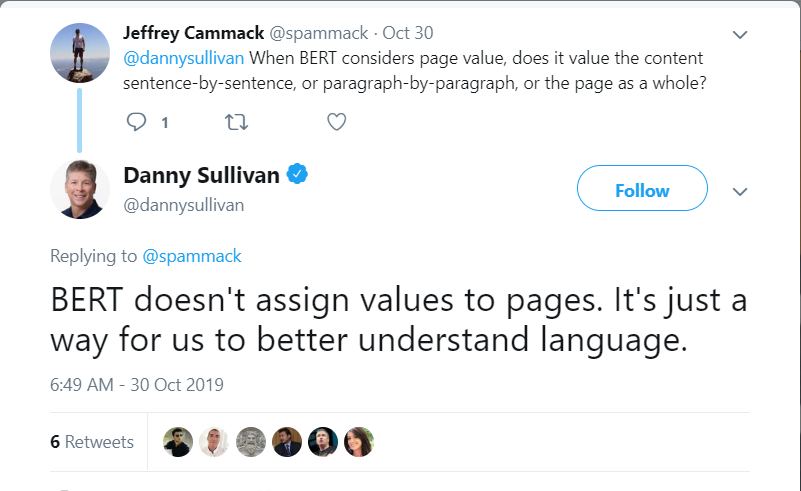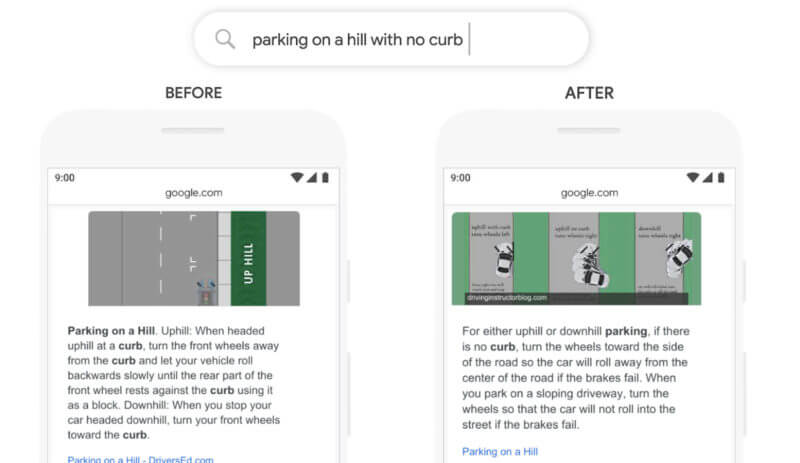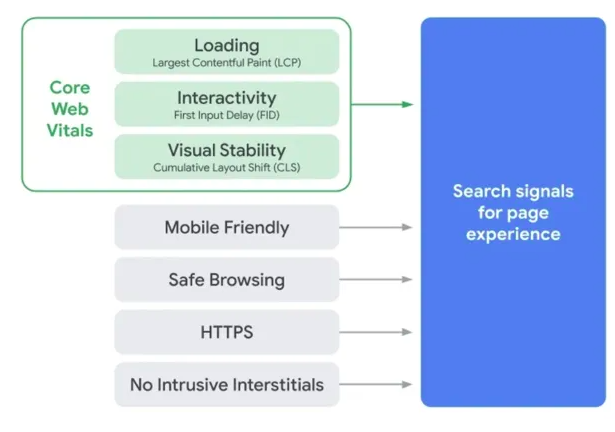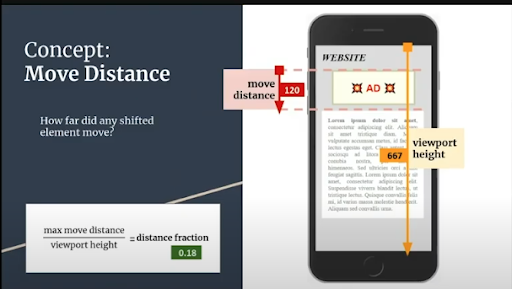Google recently announced the new Core Web Vitals will soon become official ranking signals.
While the changes won’t take effect until 2021, the fact that Google is giving us a six-month lead suggests these performance metrics are a big deal for SEO.
I sat down with SEO expert, Barry Schwartz to talk vitals and what marketers can do to get prepared for the update.
Should Voice Search Still Be a Focus for Search Marketers?
It wasn’t long ago when the SEO community was buzzing about Dialogflow and Google Actions. Yet all of a sudden, the buzz disappeared.
While not a “core vital,” voice is still part of the Google user experience.
As we consider some of the upcoming changes, I asked Barry, what’s going on with voice search. More importantly, is it something we should think about as we prepare for the updates?
Barry doesn’t think voice is over. He points out that we’re using it all the time to get directions or talk to our thermostats.
It’s embedded in our lives now and remains a factor for optimizing for the featured snippets or local search.
Barry mentioned that voice is also something we do when we’re out and about, which means, due to COVID, fewer people are performing “near me searches.”
Likely, when things return to normal (whatever that may be), we’ll start to see voice queries pick up again.
It’s also worth pointing out that optimizing for voice search looks a lot like optimizing for “regular” search.
Today, optimizing any content, be it a blog post or a Google Action, means embracing conversational queries and semantic search.
As such, you want to continue focusing on this conversational approach to make sure that you’re ranking in as many different ways as possible.
Core Web Vitals
At the very end of May, Google announced something called Core Web Vitals, a set of metrics designed to help SEOs identify opportunities to improve the user experience of their website.
Basically looks at stuff like how fast page loads–not exactly new.
According to Google, Core Web Vitals are a set of metrics that quantify key performance factors from the user perspective.
This new set of metrics contains three primary metrics and a handful of secondary metrics that all website owners should focus on to ensure that their site meets basic performance standards.
Each “vital” looks at one specific aspect of page experience–and together, they help both Google’s crawlers and SEOs narrow in on the factors that contribute to the end-users’ perceived experience.
While I’ve covered this in the Ignite Blog, here’s a quick overview of the three Core Web Vitals.
- LCP, or Largest Contentful Paint. This metric measures how fast a page’s most important content takes to load.
- FID, or First Input Delay. FID measures the time it takes for a browser to respond to a user’s action such as clicking a link.
- CLS, or Cumulative Layout Shift. CLS measures the layout stability. In other words, do page elements stay put or move around when the page loads?
So, What Does Barry Schwartz Think About Google Page Experience
Shortly after Google announced the Core Web Vitals update, they dropped another announcement, Google Page Experience. They’ll be combining existing user experience metrics with the core vitals to measure experience on a holistic level.
I asked Barry what he thinks about this update, and what metrics SEOs should focus on.
Barry mentioned that not long ago, RustyBrick spent all this time focusing on getting their user metrics to 100% and six months later, Google released an algorithm and the site’s back down to about 80%.
Not necessarily one metric to worry about. He mentions that you might have all user metrics running at 100% but the page still takes forever to load.
According to Barry, user experience isn’t always just about user performance metrics.
Although Google Chrome, they’re not only using things like FCP or one specific PageSpeed score.
They’re also looking at user metrics from Chrome data, which represents how fast pages load for real-world users.
Any developer can make tweaks to make web pages faster, at what point are you spending too much time trying to make pages load like .001% faster.
PageSpeed isn’t the only factor and companies will need to decide which ranking factors to focus on for the most impact.
Are Core Web Vitals More About Site Design or PageSpeed?
Barry says that design and speed are both important factors when it comes to determining your scores.
The Core Web Vitals cover everything that might impact how the page loads.
For example, Cumulative Layout Shift (CLS) measures whether or not page elements jump around on the user’s screen.
In that case, many of the issues that cause page elements to shift are related to whether you’ve defined the dimensions for on-page elements like ads or pop-ups.
Largest Contentful Paint (LCP) measures how long it takes to load a page’s main content. In other words, how quickly can users get the information they need?
The Core Vitals also look at responsiveness and mobile-friendliness.
Together, these metrics aim to quantify how the page loads and how it renders. The real question is, what else will Google add to this list.
Do note that Google has already announced that Core Web Vitals is a living set of ranking factors, and come 2021, we’ll likely see a few new additions to the lineup.
How Much Do We Need to Worry About Speed?
At Ignite, we do a lot of website transfers, and now, page speed and design are becoming a bigger part of this overall SEO checklist.

Google Search Console’s new PageSpeed report
My concern is, how much will people try to use this update as a fear tactic to drum up new business.
For example, I can see people are spending a ton of money trying to lock down a perfect score across all web vitals then later, this update turns out not to be such a big deal. If it impacts 5% or 2% of the algorithm.
Barry says, when Google launched the Mobile-Friendly update, Danny Sullivan (who wasn’t at Google) called it “mobile-geddon.”
Google responded by saying that, “no, this isn’t going to derail your rankings and we’ll give you plenty of time to make the changes.”
Ultimately, the mobile update turned out to be important but nothing compared to the surprise algorithm changes that can cause real damage.
Barry says that the Core Web Vitals are important but companies shouldn’t freak out too much. There’s no reason to instill fear among readers.
Again, if you look at what each of these vitals measures, you’ll find that you’re still focused on many of the same metrics.
With the update, users get a simplified, granular view into all factors that could be slowing down your page performance. If anything, the update makes the reporting and diagnostic process more accessible and provides actionable steps toward improvement.
What Makes a Quality News Site These Days?
These days, news sites face many key challenges that other websites don’t have to deal with. I think a lot of people aren’t sure whether they should focus on creating evergreen content or breaking news.
Barry Schwartz was one of the first people to report on the Core Vitals Update. I asked him what attracted him to this idea of creating a news site, and what he thinks makes a news site successful.
Barry says he started SEO Roundtable to create a sort of “notebook” recording what the SEO community is talking about. Then people started to follow it.
“I still like looking back on what’s changing. For example, if I’m speaking at SMS Next, then I can look back on 20 years’ worth of algorithmic changes, and can give a talk that looks at the history of those changes.”
On a more practical note, he says that SEO Roundtable acts as a resource that SEOs can check when they notice a significant drop in traffic.
They can look back and see if there was an algorithm change around a specific date. That living history allows SEOs to learn whether rankings dropped because of a mistake they made or because the rules have changed.
Barry says he covers this “stuff” (rumors, algorithm updates, ranking factors) in spite of the fact that many people don’t think it’s a good idea. It’s become a valuable community for SEO pros that provides insights you can’t find anywhere else.
I personally found Barry was a great resource when talk about Google’s EAT guidelines started to emerge.
All of this talk about expertise, authority, and trust–and the fact that these aren’t official ranking factors made this a particularly difficult concept for SEOs to wrap their heads around.
I remember we released an EAT checklist mentioning things like putting a bio on your blog, citing credible sources, etc.
We’d go through and make these updates ourselves as we heard about them. In many cases, the pages we updated ended up making a full recovery.
BERT and Intent
I asked Barry about another thing I think people still have difficulty wrapping their head around: the BERT update.

Google BERT update doesn’t assign scores
Barry says that BERT is not an algorithm update.
It’s an improvement to Google’s Natural Language Processing (NLP) engine that helps crawlers better understand the queries people enter into the search engine.
So, what this does is, it allows Google to better match search queries to the content on the page. It doesn’t directly impact search rankings.
Barry says that the BERT update impacted about 10% of all search queries on a global level. While that’s certainly significant, 90% of queries maintained their rankings.
He also mentioned that if you dig into the patent documents, Google is very clear that BERT is a tool for making search better.

Google BERT in a featured snippet example
It’s not meant to be a quality update or a penalty update, it’s purely about language.
I challenged Barry on this point, as many SEO pros say that BERT has made SEO more intent-driven.
Google’s official stance on this is, you can’t optimize for BERT. However, I’ve personally seen BERTs impact on rankings with our clients and on the Ignite Visibility site.
We’d go in and change the intent of our content because if it didn’t align with the target keyword, there would be no chance that content would ever rank.
Barry says it’s hard to say whether this was caused by RankBrain, BERT, or something else.
He says that many times, several AI properties are updated at the same time, making it difficult to pinpoint which change actually moved the needle on rankings.
The point is, while many experienced a change in rankings, there’s no way to know for sure what caused that to happen.
Can We Get Rid of Links?
Given how far we’ve come in terms of intent and user experience, why are links still a ranking factor?
I had to ask: can we ever get rid of links?
Barry says that Google did run an experiment a while back (not live) to see how bad search would get if they removed links. As it turned out, it was pretty bad.
Getting rid of links won’t make search better, and in 2020 and beyond, they remain an important factor. According to Barry, links and content have always been the most important parts of SEO.
What’s Ahead for SEO?
I asked Barry about whether he’s happy with where search is today and where he thinks we’re headed.
He says that SEO is way more sophisticated than it was back in the day. There’s a lot more communication from Google and more information available to anyone with a website.
But the search landscape is more saturated than ever and SEOs must keep up with a bunch of different things like schema to compete.
Barry says that the early days of SEO were a lot more fun.
He misses exploring the “wild west” of search, but says he’s not upset about where we’re at right now.
Today, search is in a really stable place. For example, if you look at the May core update, you’ll notice that there’s been little negative feedback from the SEO community.
So while some websites have seen rankings drop, Google keeps making incremental changes toward creating a more stable search environment.
Is Schema the Future of Search?
I see schema being a big part of the future if there’s enough adoption.
It’s not just that 10-link page anymore.
There’s the knowledge graph, the ability to create Google actions and so many more ways to highlight key elements on your site.

Barry says that most schemas result in a higher click-through rate and they’re an effective tool for helping Google understand your content better.
You may want to test it to determine whether it’s worth it or not.
Interestingly, he also mentioned that many people at Google are surprised that schema is still around as they assumed we’d reach that point where the search engine no longer needs it.
As it stands, schema continues to be an important part of search, likely to stick around for the long-haul.
What’s Ahead for AMP?
Google announced that when the Page Experience update goes live, AMP will no longer be a requirement for Top Stories.
I asked Barry if he thinks AMP will stick around long term or go away because it’s not worth the hassle. Will publishers maintain AMP if it’s no longer a prerequisite for making a Top Stories appearance?
The issue with AMP is it requires users to maintain two code bases. If something goes wrong with your website, something will go wrong with your AMP page and vice versa.
Barry predicts that most people will move away from AMP, but acknowledges that it is a quick way to boost page speeds.
However, you’re probably better off making page speed improvements based on the suggestions in your Core Vitals report.
Wrapping Up
You heard it from SEO expert Barry Schwartz himself: the Core Web Vitals and Page Experience updates are important but SEOs shouldn’t fret too much about the change.
Looking forward, AMP will likely disappear, schema will stick around, and voice is waiting for a post-COVID resurgence.
Barry also mentioned that while SEO is ever-changing, two things remain the same since Google launched: content and links still rule the search game.

